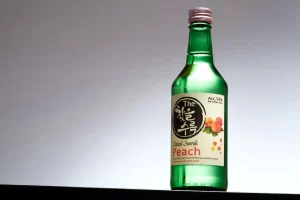Wearing the uniform of the US Army is an honor for a soldier because he/she has a legacy of those who served before them that needs to be cherished. It is a big responsibility to take that legacy and meet expectations because it takes a lot of personal courage, loyalty, integrity, selfless service, honor, duty, and respect. Lots of sacrifices make a good soldier who puts other people in front of his life. So, combat uniforms always were admirable even though it changed their shapes over time. The differences between combat uniforms in the US military happened over time.
Today combat uniform includes T-shirt, belt, pants, kevlar helmet, boots, jacket, and patrol cap. Over time the color changed in its tones from brighter to subdued colors. The main goal was to make uniforms that suit the nature and to be hard to spot a soldier.
The Difference Depending on the Natural Environment
US military today is using the Operational Camouflage Pattern, which has subdued colors, green, beige, brown, and dark brown. This pattern is used in operational environments, deserts, and fields. But for the forests, uniforms are brighter colors to match with trees, leaves, and branches.
Nature dictates conditions, so soldiers have different uniforms for cold and hot weather. Jackets are warmer for cold weather and lined inside with warm material, and boots are made of high-quality material that must be waterproof. Boots for hot weather are made to be breathable and light, but also being very easy to wear.
The Difference Depending on the Occasion
US Army has two primary uniforms; one of them is the Army combat uniform, and the other is Army Green Service Uniform. The first is used in operational environments, and Army Green Service Uniform is used during formal and ceremonial occasions and also during every day professional wear.
The Difference between Uniforms in History
The first uniforms were made in a way that was very similar to British uniforms; the blue Continental Army uniform was adopted during the Revolutionary War. Shortly after that, uniforms changed into blue coats that remained in service until about 1820. At that time, the soldier’s status and the rank was shown through the use of epaulets and shoulder wings. Then, Soldiers began wearing the “frock” coat in 1851 and colored accents whose goal was distinguishing among branches.
During the American Civil War, the adoption of brass branch insignia happened. A big turnaround came during the Spanish-American war because soldiers started using khaki uniforms for the field for the first time. In World War II, hats were excluded, and soldiers started using helmets next to olive drab uniforms for the field. In 1954, the Specialist rank was created by the Army. It included different levels that could be obtained.
Olive green shade utility uniform was adopted in 1952, which will be used later in wars in Vietnam and Korea. In the Vietnam War, the camouflage uniform and tiger stripe uniform started to be used. Later, woodland camouflage battle dress uniforms were adopted, becoming the main field uniform of the Army until the mid-2000s. Also, a desert-colored version and a digital-style uniform were made what will lead to the uniforms we have today, the Operational Camouflage Pattern.
Conclusion
A lot of factors affected a way how uniforms looked like and how it looks today. Over time it needed to develop step by step to come to this point. The main difference between uniforms in the US military is an occasion; it means if its operational environment or formal and ceremonial occasion. Also, the environment has a big influence when it comes to colors of uniforms, and weather defines the thickness of the material.




